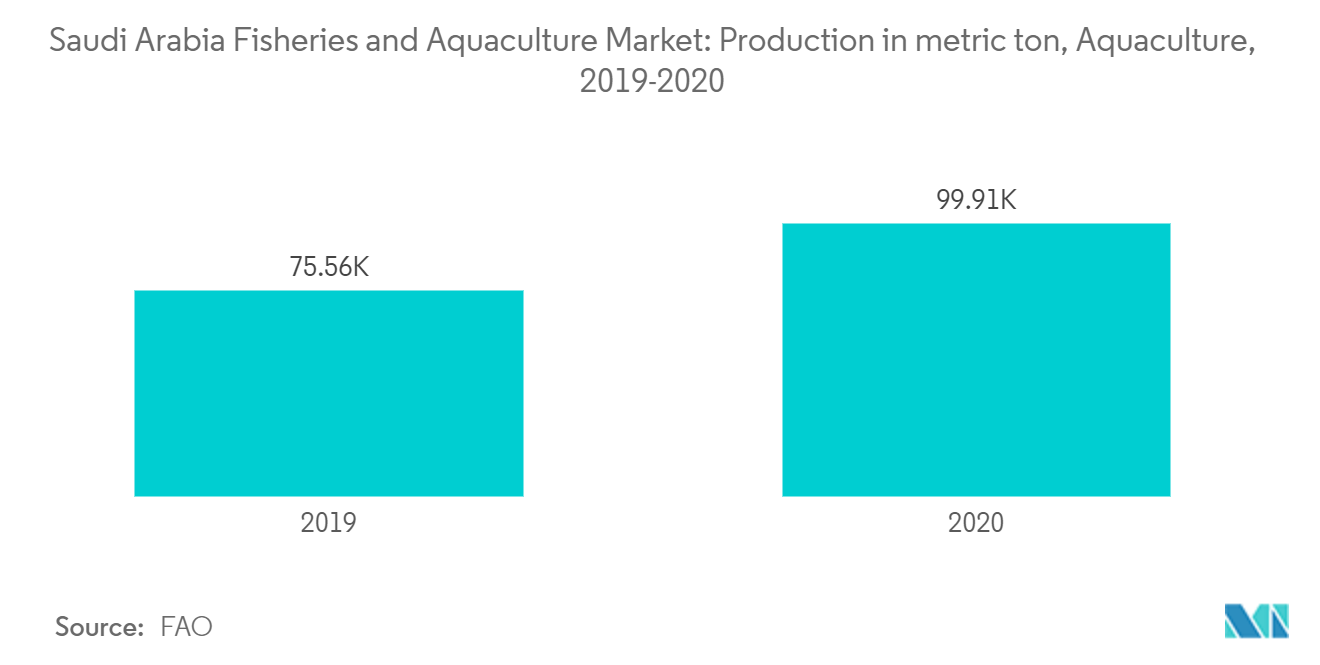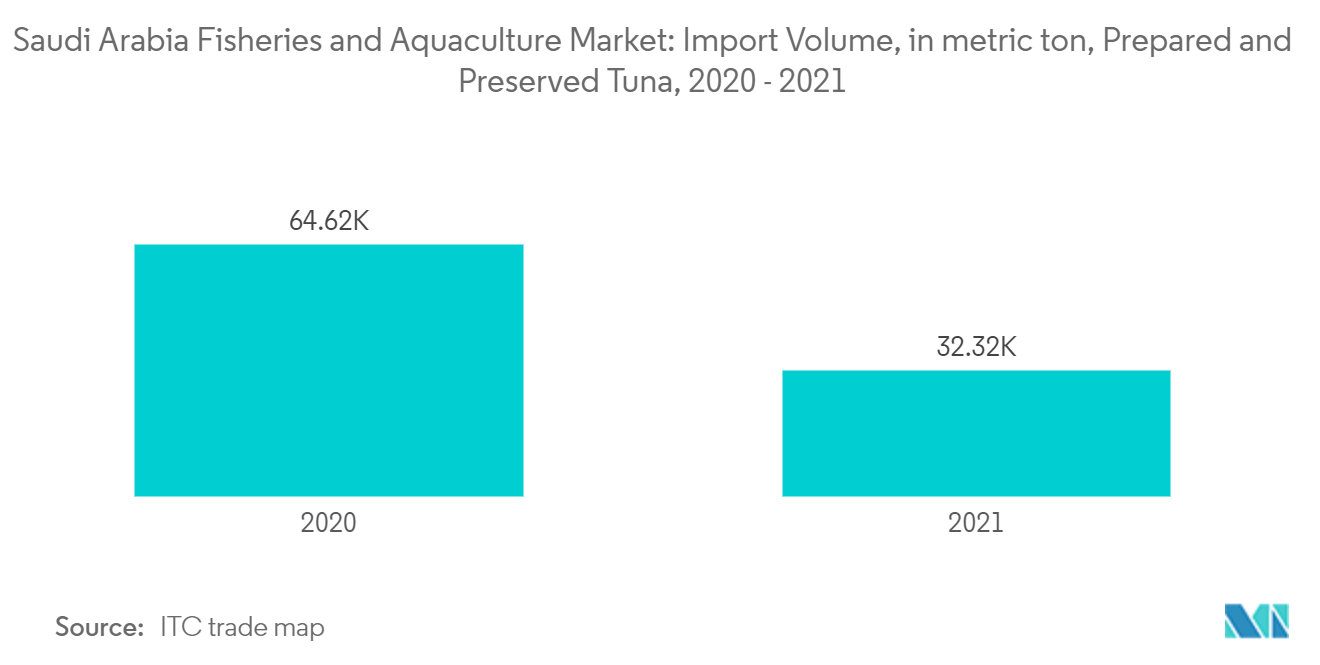Market Trends of Analysis of Fisheries and Aquaculture Sector in Saudi Arabia
Government support for the aquaculture industry
The demand for seafood in the country is going up because more people are eating protein-rich foods and more people are eating shrimp and oysters.To meet domestic requirements, countries are dependent on imports. Importing and exporting reduce import dependency, and the government has undertaken various production-oriented initiatives to meet the growing seafood consumption within the country. The government has established regulations on fish entering and leaving the country. According to Circular No. 35657 dated 8/2/1431 AH by the Ministry of Environment, Water, and Agriculture, the government has brought about restrictions to govern the imports of certain species and controls on aquatic organism imports. Thus, Saudi Arabia's specific, strict quality and safety assurance programs made KSA renowned for its safe and high-quality seafood products and imports into the country.
Moreover, the government has undertaken five main programs totaling SAR 1.3 billion (0.35 billion USD) to strengthen the country's aquaculture business. These efforts seek to reduce the local economy, promote food security, and secure job opportunities in the country. Along with this, regional food security is a vital part of the government's efforts to improve the region's quality of life and increase the efficiency and competitiveness of locally produced food products, one of its strategic initiatives. Growing local consumption, driven by population growth and an increase in consumption per capita, is expected to generate an additional demand of 600,000 tons in 2030. With the government's commitment to the growing aquaculture industry, it introduced the "Vision 2030" plan. The improvement plan focuses on building safe and strategic food systems. The project "Vision 2030" aims to increase production from 100 thousand tons in 2020 to 600 thousand tons of fisheries products in 2030 and generate around 200,000 direct and indirect jobs in the fisheries sector by 2030. Additionally, as part of the Kingdom's Vision 2030 project, the National Fisheries Development Programme (NFDP) intends to attract USD 4 billion in investments in the aquaculture sector. As a result, there is increased interest from local and international investors for either expanding fisheries or aquaculture farming in Saudi Arabia in the forecast period.

Processed Fish Segment is likely to Witness Significant Growth
The consumption of processed fish is being driven by the rising demand for aqua food because of its nutritional properties, such as the availability of superior-quality proteins, vital fatty acids, and macro- and micronutrients. The increasing working population, busy lifestyles, and companies introducing flavorful and tasty processed fish products are a few major factors supporting the growth of the processed fish segment. In addition, the expanding trend of consuming convenience foods due to busy lifestyles is influencing consumer inclination toward processed foods such as ready-to-eat and ready-to-cook fish products. This is raising the demand for imports of prepared and processed fish from different countries. For instance, according to the ITC trade map, in 2021, the imports of preserved and prepared tuna stood at 32,317 metric tons, which were valued at USD 178,268 thousand. Furthermore, due to the prevailing pandemic conditions, imports showed a slight decrease in 2021, but the industry recovered after the post-pandemic conditions, and the segment is expected to grow at a faster pace during the forecast period.
Along with this, the business of processing fish in Saudi Arabia is growing because of better ways to distribute fish and to process it.So, it is expected that the introduction of new products, the growth of distribution channels, and improvements in canning methods will speed up market growth during the projection period.
Moreover, different varieties of processed fish available in the country's market are also attracting people to try new products. Cleaned fish is available raw, salted, battered or breaded, with ready-to-cook added ingredients, as well as many ready-to-eat processed fish products. Also, players in the country are making their launches in such an attractive way by introducing different flavorful products. As a result, such factors are expected to drive and boost the market under consideration during the forecast period. There are several seafood companies in Saudi Arabia, of which some have processing plants, imports, or even exports, like Arab Fisheries Co., Izalco LLC, Sami Hamad Est., and Saudi Fisheries Company.

